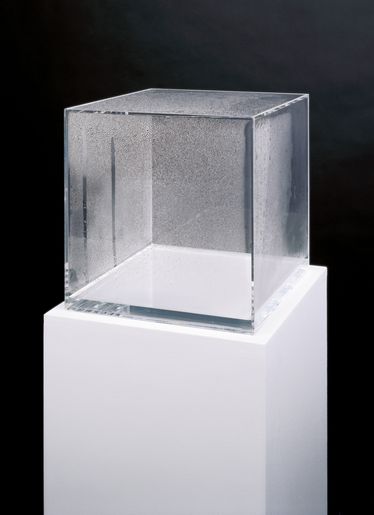Kondensationswürfel

Hans Haacke
Kondensationswürfel, 1963-65
Sculpture, Clear acrylic glass, water, light, air currents, temperature (climate in exhibition situation), 30.4 x 30.4 x 30.4 cm, Edition 7/10, Produced by Hans Haacke 2001
GF0003070.00.0-2001
Artwork text
I have partially filled simple stereometric Plexiglas containers with water and have sealed them.The intrusion of light warms the inside of the boxes. Since the inside temperature is always higher than the surrounding temperature, the enclosed water condenses: a delicate veil of drops begins to develop on the inside walls. At first, they are so small that it is only possible to distinguish single drops from up close. The drops grow—hour by hour—small ones combine with larger ones. The speed of growth depends on the intensity and the angle of the intruding light. After a day, a dense cover of clearly defined drops develops and they all reflect light. With continued condensation, some drops reach such a size that their weight overcomes the forces of adhesion and they run down along the walls, leaving a trace. This trace starts to grow together again. Weeks later, manifold traces, running side by side, have developed. According to their respective age, they have drops of varying sizes. The process of condensation does not end. The box’s appearance changes steadily yet slowly and never repeats itself. The conditions are comparable to a living organism which reacts in a flexible manner to its surroundings. The image of condensation cannot be precisely predicted. It changes freely, bound only by statistical limits—I like this freedom. (Hans Haacke)